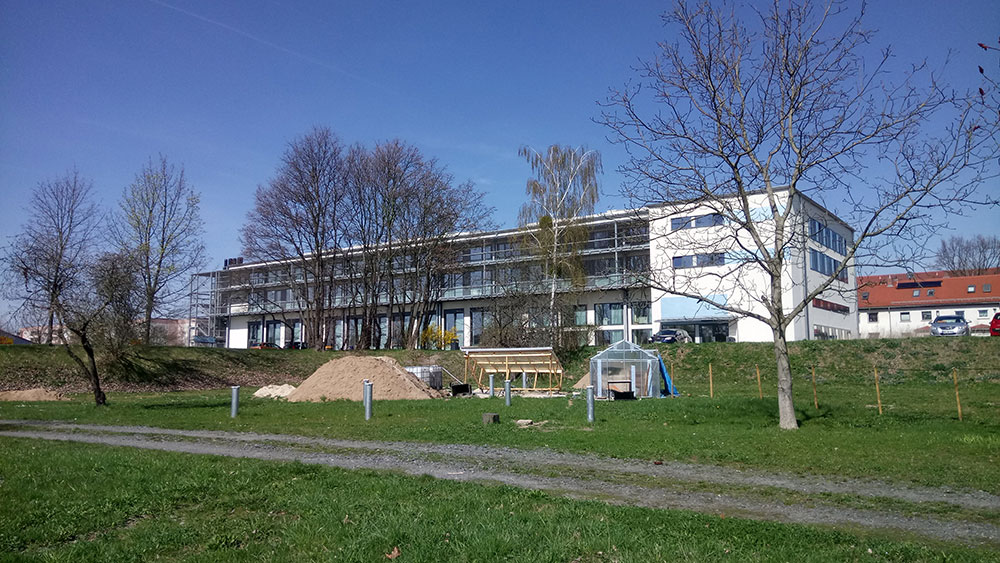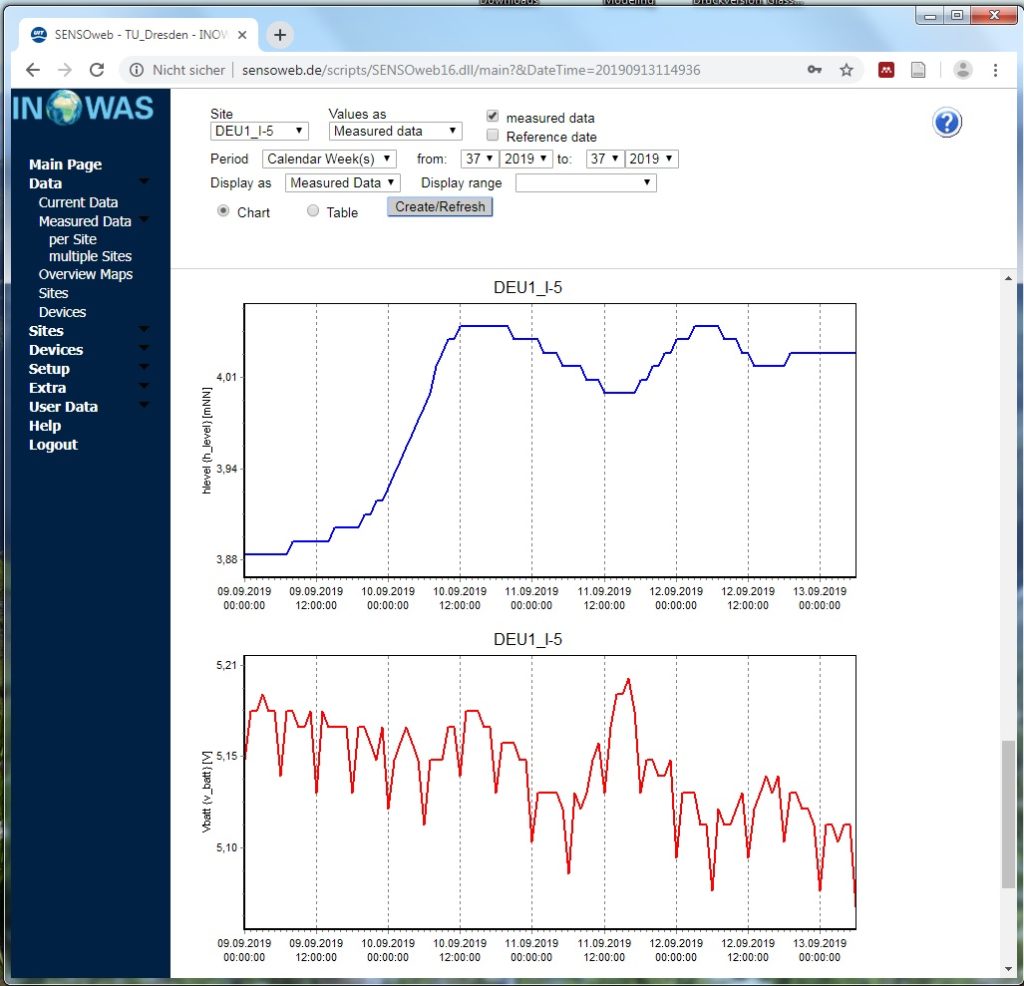The pilot-scale scheme in Pirna, Germany (DEU1) consists of small-scale infiltration ponds and ASR wells that will be used for system setup, testing and validation of the real- time monitoring system as well as the developed tools.

The pilot-scale scheme consists of seven 2-inch wells and an infiltration basin. Four of the wells are equipped with real-time monitoring sensors. The groundwater sensors measure groundwater level, electrical conductivity, dissolved oxygen, pH, temperature and the battery status hourly. Every six hours, the data is transmitted via GMS to the web-based SENSOWeb. From there, the data is transferred to the INOWAS platform. Both on the web-based SENSOWeb as well as on the INOWAS platform, the sensor data can be visualized.

In addition, various 1-inch wells exist at the test field where groundwater sensors which measure the groundwater level on an hourly basis are installed. Those sensors cannot transmit data automatically and have to be readout manually on a regular basis.
The 2-inch wells and the infiltration basin can be used for experiments to infiltrate water into the underground and in that way test managed aquifer recharge applications on a pilot scale.